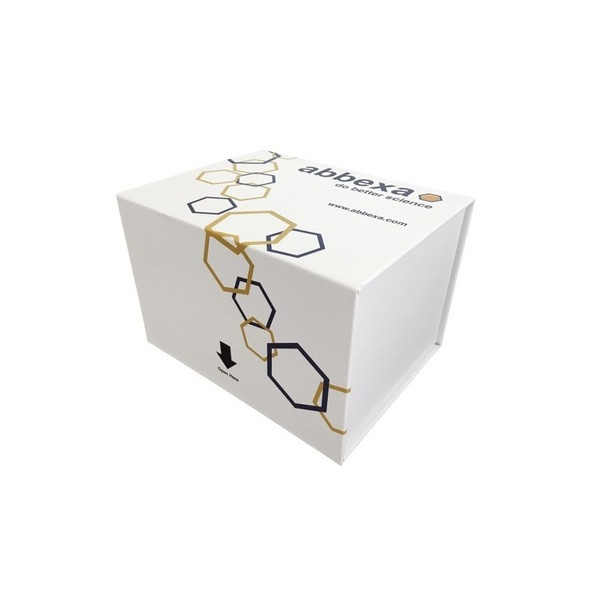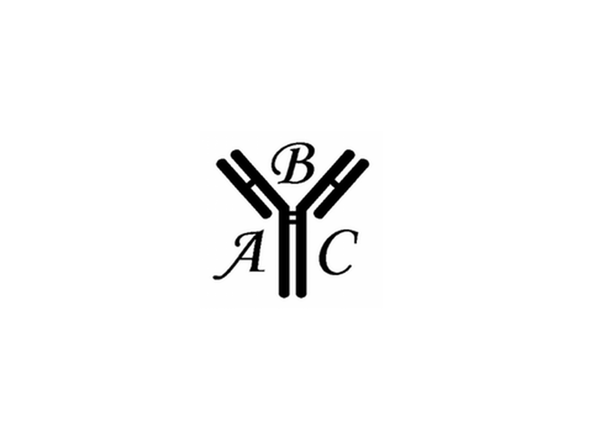Description
4-Hydroxynonenal (4-HNE) ELISA Kit. Cat# abx257639. Supplier: abbexa.
4-Hydroxynonenal (4-HNE) ELISA Kit is an ELISA Kit for the in vitro quantitative measurement of 4-Hydroxynonenal (4-HNE) concentrations in serum, plasma and other biological fluids.
| Introduction | 4-Hydroxynonenal, or 4-hydroxy-2-nonenal or 4-HNE or HNE, (C9H16O2), is an α,β-unsaturated hydroxyalkenal that is produced by lipid peroxidation in cells. 4-HNE is the primary alpha,beta-unsaturated hydroxyalkenal formed in this process. 4-HNE has 3 reactive groups: an aldehyde, a double-bond at carbon 2, and a hydroxy group at carbon 4. It is found throughout animal tissues, and in higher quantities during oxidative stress due to the increase in the lipid peroxidation chain reaction, due to the increase in stress events. 4-HNE has been hypothesized to play a key role in cell signal transduction, in a variety of pathways from cell cycle events to cellular adhesion. |
| Target | 4-Hydroxynonenal (4-HNE) |
| Reactivity | General (All species) |
| Tested Applications | ELISA |
| Recommended dilutions | Optimal dilutions/concentrations should be determined by the end user. |
| Storage | Shipped at 4 °C. Upon receipt, store the kit according to the storage instruction in the kit's manual. |
| Validity | The validity for this kit is 6 months. |
| Stability | The stability of the kit is determined by the rate of activity loss. The loss rate is less than 5% within the expiration date under appropriate storage conditions. To minimize performance fluctuations, operation procedures and lab conditions should be strictly controlled. It is also strongly suggested that the whole assay is performed by the same user throughout. |
| Test Range | 0.625 ng/ml - 40 ng/ml |
| Sensitivity | 0.38 ng/ml |
| Standard Form | Lyophilized |
| Detection Method | Colorimetric |
| Assay Type | Competitive |
| Assay Data | Quantitative |
| Sample Type | Serum, plasma, urine and other biological fluids. |
| Target Type | Antigen |
| Assay Principle | This kit is based on competitive enzyme-linked immuno-sorbent assay technology. An antigen is pre-coated onto a 96-well plate. Standards, test samples, and biotin-conjugated reagent are added to the wells and incubated. A competitive inhibition reaction takes place between the the pre-coated 4-HNE and the 4-HNE in the sample with the biotin-labelled antibody. The HRP-conjugated reagent is then added, and the whole plate is incubated. Unbound conjugates are removed using wash buffer at each stage. TMB substrate is used to quantify the HRP enzymatic reaction. After TMB substrate is added, only wells that contain sufficient 4-HNE will produce a blue coloured product, which then changes to yellow after adding the acidic stop solution. The intensity of the color yellow is inversely proportional to the 4-HNE amount bound on the plate. The OD is measured spectrophotometrically at 450 nm in a microplate reader, from which the concentration of 4-HNE can be calculated. |
| Kit Components | The kit components listed are for reference only. The product manual may differ slightly. The product should be used as stated on the product manual included and delivered together with the product.
|
| Material Required But Not Provided |
|
| Reagent Preparation | This procedure is provided for reference only. The product manual may differ slightly. The product should be used as stated on the product manual included and delivered together with the product.
|
| Assay Procedure | This procedure is provided for reference only. The product manual may differ slightly. The product should be used as stated on the product manual included and delivered together with the product.
|
| Protocol | This procedure is provided for reference only. The product manual may differ slightly. The product should be used as stated on the product manual included and delivered together with the product.
|
| Results Calculation | This assay is competitive, therefore there is an inverse correlation between 4-HNE concentration in the sample and the absorbance measured. Create a graph with the log of the standard concentration (y-axis) and average absorbance measured (x-axis). Apply a best fit trendline through the standard points. The 4-HNE concentration of the samples can be interpolated from the standard curve. |
| Assay Precision | Intra-assay Precision (Precision within an assay): 3 samples with low, medium and high levels of 4-Hydroxynonenal (4-HNE) were were tested 20 times on one plate, respectively. Inter-assay Precision (Precision between assays): 3 samples with low, medium and high levels of 4-Hydroxynonenal (4-HNE) were tested on 3 different plates, 8 replicates in each plate. CV (%) = (Standard Deviation / mean) × 100 Intra-Assay: CV<10% Inter-Assay: CV<10% |
| Availability | Shipped within 5-12 working days. |
| Note | This product is for research use only.
The range and sensitivity is subject to change. Please contact us for the latest product information. For accurate results, sample concentrations must be diluted to mid-range of the kit. If you require a specific range, please contact us in advance or write your request in your order comments. Please note that our ELISA and CLIA kits are optimised for detection of native samples, rather than recombinant proteins. We are unable to guarantee detection of recombinant proteins, as they may have different sequences or tertiary structures to the native protein. |
| Plate coated with | Antigen |
1 Review
-
higher quality
I fully recommend this company with no drawbacks, as they give priority to customer demand.










